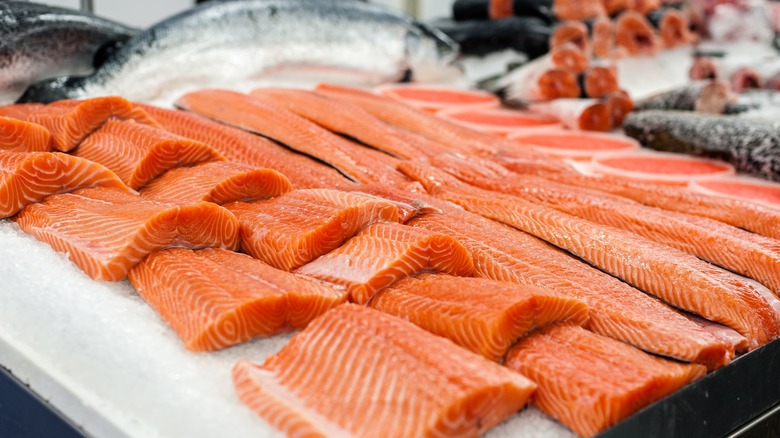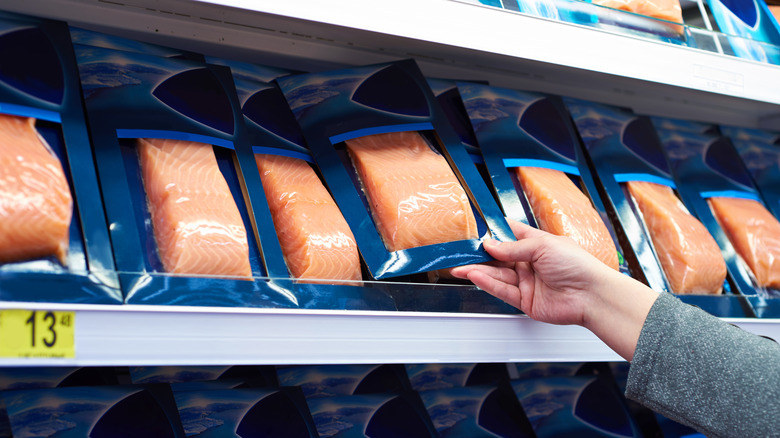The Salmon You're Eating May Not Be What You Think It Is
Food fraud has been a growing issue over the past 15 years or so, and seafood fraud in particular is a cause of concern for many consumers. Seafood is expensive and there's an enormous incentive to label a cheaper fish product as something of higher quality to reap the financial profits from the difference. Salmon is easily one of the most popular types of seafood on the market and that high demand is leading to questionable marketing practices that could have you eating something different than what you paid for.
That could mean a cheaper coho salmon being sold as a more expensive king salmon, a filet of rainbow trout being labeled as salmon, or salmon that's raised on a farm claiming to be wild-caught. Salmon fraud is an enormous issue, with some studies showing that as much as 40% of all salmon sold is mislabeled. Keep in mind that food fraud is intentional. There likely are instances where the wrong kind of fish is being sold on accident, but that's not what we're talking about here.
Food fraud isn't a mistake, it's a choice being made specifically to take advantage of the premium people will pay for quality food products. This topic is highly complex and in such a short article there's only so much we can cover. If salmon fraud is news to you, we highly recommend looking more into the topic of seafood fraud. There's a lot of ground we simply won't be able to cover here.
What to do about salmon fraud
The conversation around wild-caught versus farm-raised salmon is a contentious one. There are plenty of people who would prefer that all salmon is wild-caught, but wild salmon populations would quickly go extinct if we attempted to meet current demand that way. In that light, salmon aquaculture makes sense. What doesn't make sense is lying to the public about the food they're eating.
There are some tricks you can learn as a consumer to avoid salmon fraud, but they aren't infallible. Reasonable minds may differ on how exactly to solve this issue, but as far as we can tell, it's going to require some amount of regulation that would make the salmon supply lines more transparent than they currently are. Until that day comes, it's up to us to protect ourselves against these fraudsters. The first thing you can do is become more familiar with what the type of salmon you are searching for looks like.
If you prefer eating wild-caught salmon over farm-raised, then it's helpful to learn how to identify it. Farm-raised salmon is fattier, with more noticeable white lines of fat running across the flesh. Wild salmon, on the other hand, tends to have a more consistent and darker orange hue with minimal fat. This doesn't work well at restaurants, though, since you won't see the fish until after it's prepared. Another method is to look at the price. Wild salmon is always considerably more expensive. If the deal on wild salmon seems too good to be true, it probably is.

